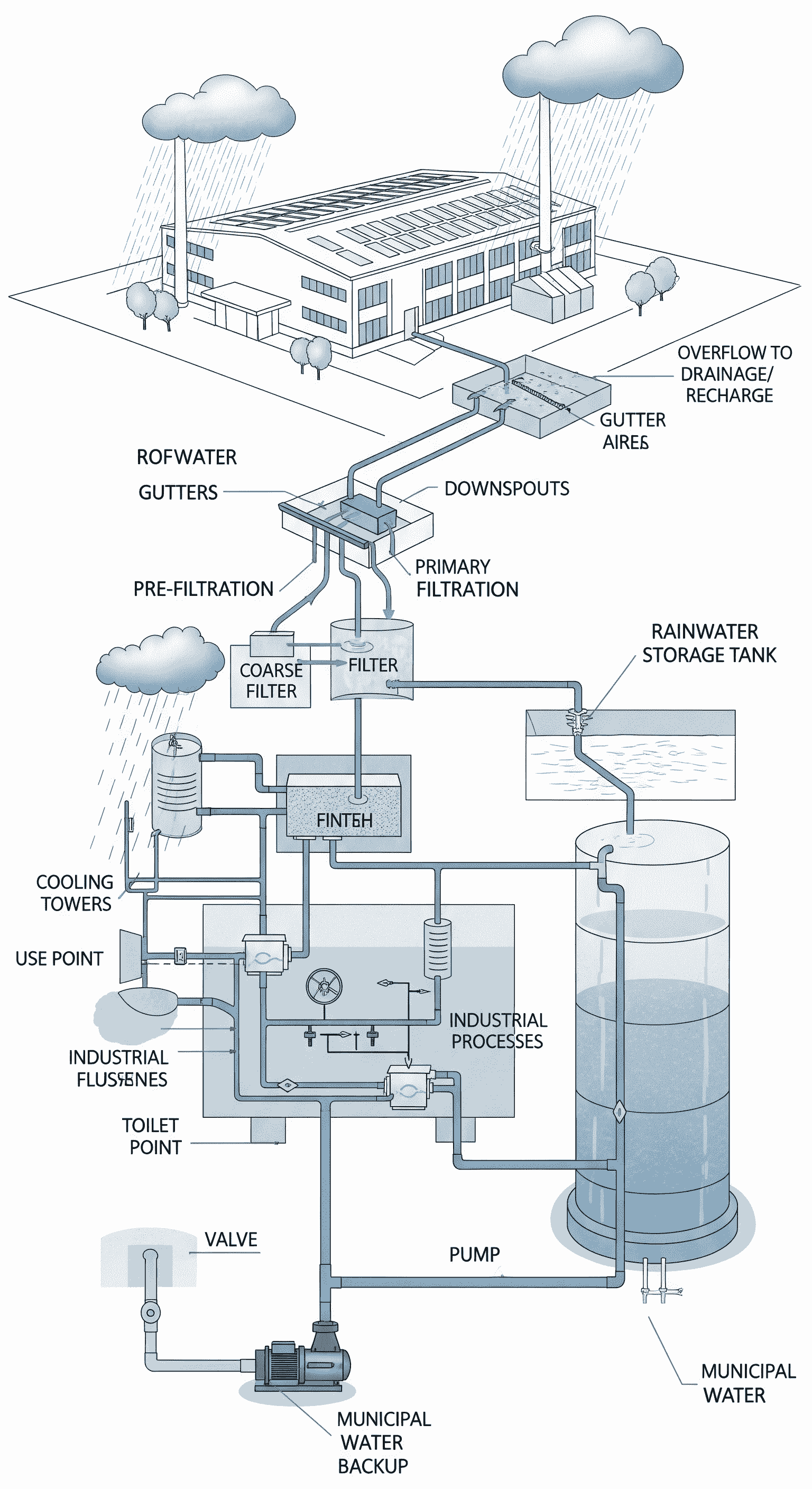Product Details

Rain Water Harvesting
- Catchment Area: The roof of a house or building, acting as a collection surface.
- Gutter and Downpipe: Channeling rainwater from the roof to a storage tank
- Filter: Removes debris and impurities from the water before storage.
- Storage Tank: A container to hold the collected rainwater.
- Pump (Optional): Used to distribute water to different points of use.
Process:
- Collection: Rainwater falls on the roof and is collected by the gutters and downpipes.
- Filtering: The water passes through a filter to remove leaves, dirt, and other debris.
- Storage: Clean water is stored in the tank for later use.
- Distribution (Optional): A pump can be used to distribute water to taps, toilets, or irrigation systems.
- Uses of Harvested Rainwater:
- Non-potable uses:
- Toilet flushing
- Laundry
- Watering plants and gardens
- Car washing
- Potable uses (after treatment):
- Drinking water (in areas with limited clean water sources)
- Cooking
Benefits of Rainwater Harvesting:
- Water conservation: Reduces reliance on municipal water supplies.
- Reduced water bills: Lower water usage can lead to cost savings.
- Groundwater recharge: Some systems can be designed to recharge groundwater.
- Reduced stormwater runoff: Helps prevent flooding and erosion.
- Improved water quality: Harvested rainwater is often cleaner than municipal water.
